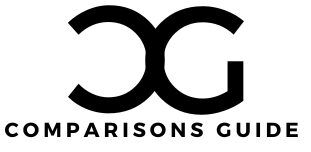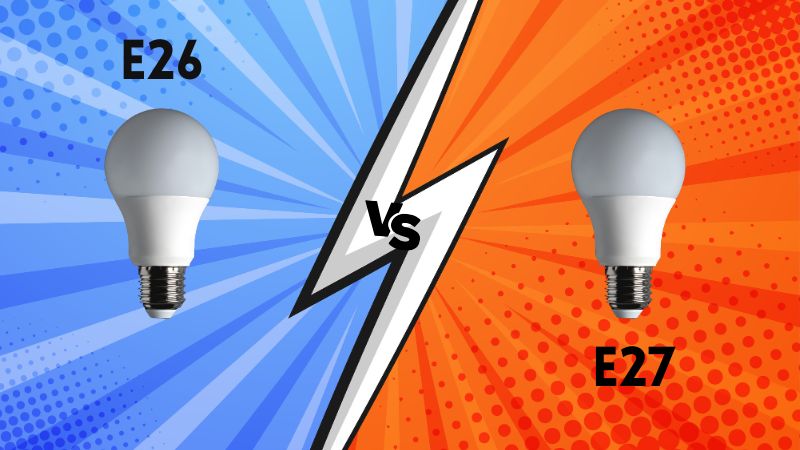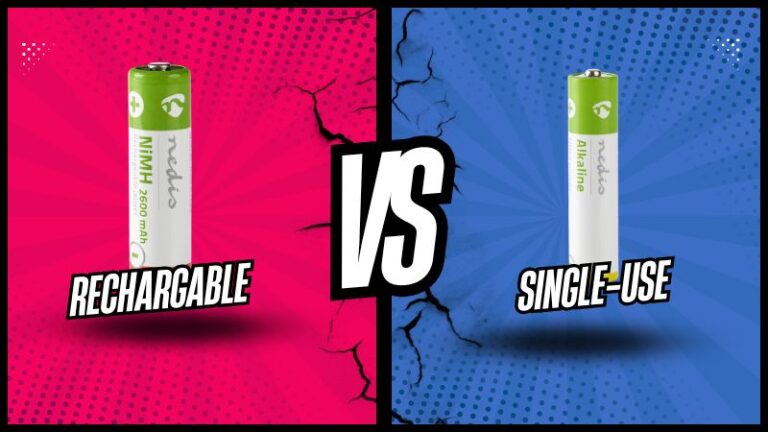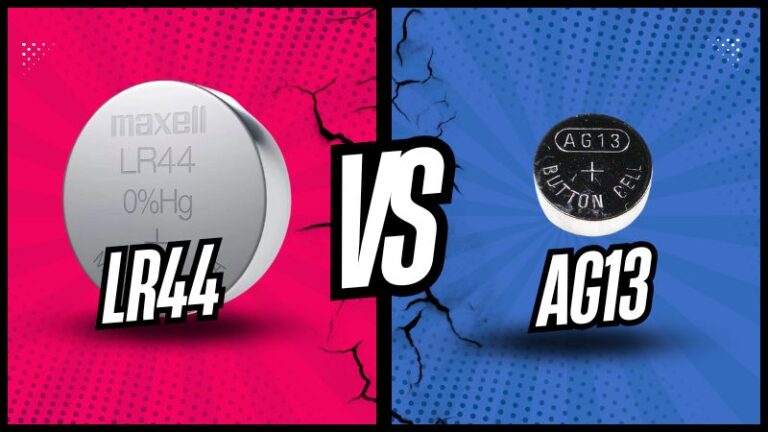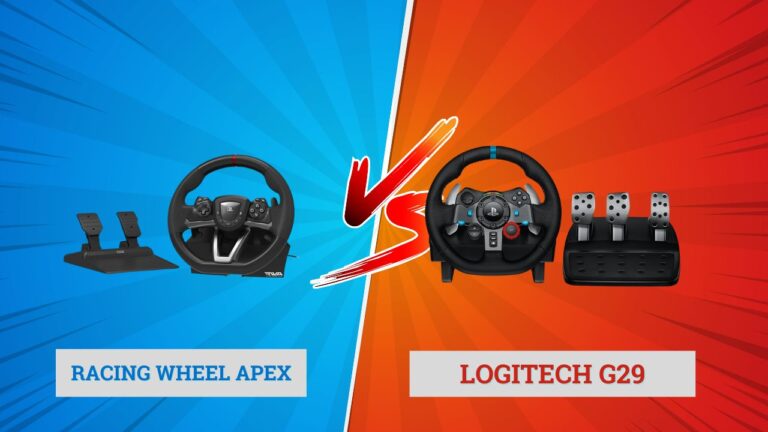When it comes to choosing the right light bulb for your home or office, understanding the differences between E26 and E27 bulbs is essential. Both types of bulbs are widely used in various lighting fixtures, but they cater to different markets and specifications. The E26 bulb, primarily used in North America, has a base diameter of 26mm, while the E27 bulb, commonly found in Europe and other regions, features a slightly larger base of 27mm. This seemingly minor difference can impact compatibility with fixtures and sockets. In this comparison, we will explore the key characteristics of E26 and E27 bulbs, including their physical dimensions, compatibility with different lighting fixtures, and the types of light sources available in each category. Additionally, we will discuss the advantages and disadvantages of each bulb type to help you make an informed decision based on your specific lighting needs. Whether you are upgrading your home lighting or selecting bulbs for a new installation, understanding these differences will ensure you choose the right option for your requirements.
E26 – Overview, Key Specs/Features, Pros/Cons
Overview of E26 Bulbs
E26 bulbs are a popular lighting option primarily used in North America. They feature a base diameter of 26mm and are designed specifically for 120V AC electrical systems. This makes them suitable for a variety of residential and commercial applications. The E26 base is compatible with many standard light fixtures, ensuring ease of use and widespread availability. However, it is essential to ensure that the bulb is used in the correct voltage environment to avoid safety hazards.
Key Specifications and Features
The key specifications of E26 bulbs include their base diameter of 26mm and a minimum screw length of 19.56mm. These dimensions allow them to fit into standard sockets designed for 120V AC. The E26 bulb’s design is specifically tailored for lower voltage systems, which is a crucial factor when selecting bulbs for various fixtures. Additionally, E26 bulbs are often available in various styles and wattages, providing flexibility in lighting choices.
Pros of E26 Bulbs
- Widely available and compatible with many fixtures in North America.
- Designed for 120V AC systems, reducing the risk of electrical issues.
- Variety of styles and wattages available, catering to diverse lighting needs.
Cons of E26 Bulbs
- Not suitable for use in 240V AC systems, which can lead to safety risks if used improperly.
- Compatibility issues may arise with E27 fixtures due to the slight difference in diameter and voltage requirements.
- Limited to North American markets, which may restrict options for international users.
E27 – Overview, Key Specs/Features, Pros/Cons
Overview of E27 Bulbs
E27 bulbs are a type of light bulb characterized by their 27mm base diameter and a screw length of 22.0mm. They are commonly used in regions with higher voltage electrical systems, such as Europe and parts of Asia, where the standard voltage is typically between 220 and 240 volts AC. In contrast to E26 bulbs, which are designed for 120 volts AC and primarily used in North America, E27 bulbs are engineered to operate safely and efficiently in environments with higher voltage levels. The compatibility of E27 bulbs with fixtures and electrical systems is crucial for ensuring proper functionality and safety.
Key Specifications and Features
- Base Diameter: 27mm
- Screw Length: 22.0mm
- Voltage Rating: Designed for 220–240V AC
- Common Usage: Predominantly used in Europe and other regions with similar voltage standards
Pros of E27 Bulbs
One of the main advantages of E27 bulbs is their compatibility with higher voltage systems, making them suitable for a wide range of applications in various regions. Their screw-in design allows for easy installation in compatible fixtures. Additionally, E27 bulbs are available in various types, including LED and incandescent, providing consumers with options for energy efficiency and lighting preferences. The widespread use of E27 bulbs in Europe means that they are readily available in many markets, ensuring easy access for consumers.
Cons of E27 Bulbs
Despite their advantages, E27 bulbs do have some drawbacks. The primary concern is their incompatibility with lower voltage systems, such as those using E26 bulbs. Using an E27 bulb in a 120V AC socket can lead to quick burnout or safety hazards. Furthermore, the slight difference in size between E26 and E27 bases may cause confusion, leading to potential misuse if consumers do not verify compatibility with their fixtures. It is crucial to check lamp specifications to ensure safe and effective operation.
Direct Head-to-Head Comparison
Key Differences in Features
The primary distinction between E26 and E27 bulbs lies in their dimensions and voltage ratings. E26 bulbs have a base diameter of 26mm and a minimum screw length of 19.56mm, while E27 bulbs have a slightly larger base diameter of 27mm and a screw length of 22.0mm. This 1mm difference, although minor, can impact compatibility with fixtures and voltage ratings, making it essential to choose the correct bulb type for your lighting needs.
Performance Comparison
In terms of performance, E26 bulbs are designed for 120V AC electrical systems, which are predominantly used in North America. Conversely, E27 bulbs are engineered for higher-voltage environments, typically ranging from 220 to 240V AC, common in regions like Europe and the UAE. This difference in voltage can significantly affect the operational efficiency and longevity of the bulbs, as using an E26 bulb in an E27 socket can lead to quick burnout or safety risks.
Price Comparison
Pricing for E26 and E27 bulbs can vary based on brand, type, and energy efficiency ratings. Generally, E26 bulbs may be more readily available in North America, potentially leading to lower prices due to higher demand. In contrast, E27 bulbs might be priced higher in regions where they are the standard, reflecting local market conditions and availability.
Reliability Comparison
Reliability is closely tied to the compatibility of the bulbs with their respective fixtures. E26 bulbs are safe to use in 120V AC sockets, while E27 bulbs are specifically designed for 240V AC sockets. Using the incorrect bulb type can result in safety hazards or reduced lifespan, emphasizing the importance of checking lamp specifications to ensure proper fit and operation.
| Feature | E26 | E27 |
|---|---|---|
| Base Diameter | 26mm | 27mm |
| Screw Length | 19.56mm | 22.0mm |
| Voltage Rating | 120V AC | 220-240V AC |
| Common Regions | North America | Europe, UAE |
Use Cases
Who Should Choose E26?
E26 bulbs are primarily designed for use in North America, where the standard voltage is 120V AC. This makes them ideal for households and businesses in this region that require reliable lighting solutions compatible with local electrical systems. The E26 base has a diameter of 26mm and a minimum screw length of 19.56mm, making it suitable for a variety of fixtures commonly found in North American homes. Users looking for energy-efficient lighting options that fit standard sockets will find E26 bulbs to be a practical choice. Additionally, E26 bulbs are widely available and often come in various styles and wattages, catering to diverse lighting needs.
Who Should Choose E27?
E27 bulbs, on the other hand, are engineered for higher-voltage environments, typically operating at 220–240V AC, which is standard in many countries outside North America, including Europe and parts of Asia. The E27 base has a slightly larger diameter of 27mm and a screw length of 22.0mm, making it essential for users in regions with these voltage requirements to select E27 bulbs for safety and compatibility. Using E27 bulbs in fixtures designed for 240V AC ensures optimal performance and longevity. Those living in areas where E27 is the standard will benefit from the bulb’s availability in various designs and efficiencies, making it a versatile option for different lighting applications.
FAQ
What is the difference between E26 and E27 sockets?
The main difference between E26 and E27 sockets lies in their size and regional standards. E26 refers to a socket size of 26mm, commonly used in North America, while E27 is 27mm and is more prevalent in Europe and other regions. Despite the slight size difference, E26 bulbs can often fit into E27 sockets and vice versa, but it’s essential to check compatibility to ensure proper functioning and safety.
Are E26 and E27 bulbs interchangeable?
Yes, E26 and E27 bulbs are generally interchangeable due to their similar base designs. However, it is crucial to ensure that the voltage and wattage ratings match your fixture’s specifications. Using an incompatible bulb can lead to performance issues or even safety hazards. Always consult your fixture’s guidelines to confirm compatibility before making a purchase.
Which socket provides better performance?
Performance between E26 and E27 sockets is largely similar, as both can accommodate a range of bulb types, including LED, incandescent, and CFL. The performance will depend more on the bulb technology rather than the socket itself. For optimal performance, consider the lumens output and energy efficiency ratings of the bulbs you choose, regardless of the socket type.
How do E26 and E27 compare in terms of longevity?
Longevity is primarily determined by the bulb type rather than the socket itself. LED bulbs, whether E26 or E27, typically last longer than incandescent or CFL bulbs. On average, high-quality LED bulbs can last up to 25,000 hours, while incandescent bulbs may only last about 1,000 hours. Therefore, when considering longevity, focus on the bulb technology rather than the socket designation.
Is there a price difference between E26 and E27 bulbs?
Generally, there is no significant price difference between E26 and E27 bulbs, as they are both widely available in various types and brands. Prices can vary based on the bulb technology (LED, incandescent, etc.), brand reputation, and specific features like dimmability or smart technology. When shopping, compare prices across different retailers to find the best deal for your needs.
What about warranty and safety for E26 and E27 bulbs?
Both E26 and E27 bulbs typically come with manufacturer warranties that can range from one year to several years, depending on the brand and bulb type. Safety standards are also similar, as both socket types must comply with relevant electrical safety regulations. Always purchase bulbs from reputable manufacturers to ensure quality and safety, and check for certifications like UL or CE to guarantee compliance with safety standards.
Conclusion
When choosing between E26 and E27 light bulb bases, the decision largely depends on the specific requirements of your lighting fixtures and geographical location. E26 bases are predominantly used in North America, making them a suitable choice for consumers in the United States and Canada. They are compatible with a wide range of fixtures and are often found in standard household lighting applications. On the other hand, E27 bases are more common in Europe and other regions, making them ideal for users in those areas. E27 bulbs may also offer slightly different voltage ratings, which could be a consideration for international users. Ultimately, consumers should assess their local electrical standards and the compatibility of their existing fixtures before making a decision. If you are in North America, opt for E26; if you are in Europe or other regions that utilize E27, choose that base. Understanding these distinctions will ensure you select the appropriate bulb for your lighting needs.
